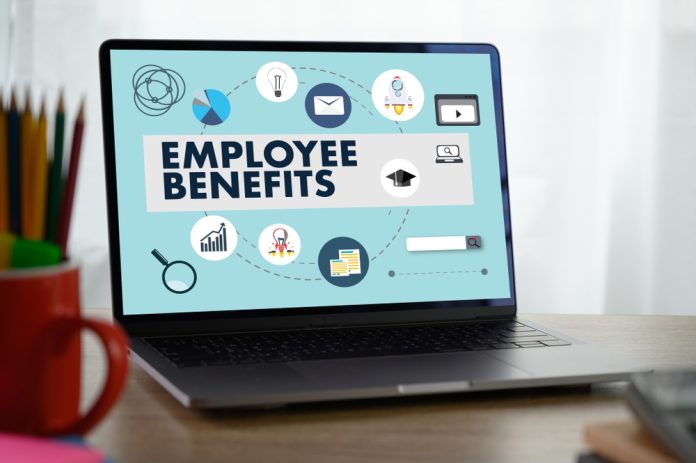
In recent years, businesses have been looking for better ways to manage their operations, maximize efficiencies, and incorporate new technologies to keep pace with an evolving digital landscape. One area that also is being looked at in this new light is benefits administration.
Too many organizations use a benefits technology solution that can only do the bare minimum. In many cases, the technology can only do one thing: enroll. A benefits technology solution like that isn’t solving anything, and organizations are missing out on functionality that genuinely supports their needs.
Signs You Need to Update Your Benefits Technology
Disconnected Systems
Technology is supposed to simplify life—otherwise, it’s not doing its job. If your technology requires you to extract information from the system and manually enter it elsewhere, whether for carriers, payroll, or other HR systems of record, your technology is not helping you efficiently accomplish administrative tasks.
Instead of manually entering data, deploying a technology solution that allows you to send electronic eligibility files to carriers and automatically updates payroll every time there is an enrollment change saves HR teams a lot of time.
Integration with other HR systems is crucial not only for streamlining benefits administration but also for your HR technology strategy as a whole. The most effective strategy is one that deploys best-of-breed platforms for all components of HR and connects them together to cultivate an HR ecosystem.
You’re Using Technology that Isn’t Built for Benefits
When you use technology that isn’t built for benefits, you’ll likely run into some trouble.
Too many organizations fall for the “all-in-one” solution trap. The idea of having one system that encompasses all components of HR sounds appealing and efficient, but you’ll soon realize these systems typically are built to be payroll-centric, while the functionality of the benefits falls flat.
Take ACA, for example. Without the right technology solution, you leave yourself exposed to IRS penalties. All of the data required for reporting already lives in your benefits technology. HR teams can use the system to track coverage offers for full-time employees leaning toward gaining/losing eligibility, plan affordability, and more to keep their firm in compliance throughout the year. The cost of investing in a system that is truly built for benefits is worth avoiding the risk of facing penalties imposed by the IRS for incorrect reporting, which is much more costly.
You’ll also find that some systems cannot handle many types of benefits and their unique complexities. Many benefits packages recently have expanded to include more voluntary benefits such as tuition reimbursement or pet insurance, so you’ll want your system to have the ability to support these benefit plans.
Lack of Self-Service
Think about how engaged your employees are with their benefits. Are they just opting for the same plan year after year without ever looking at other plans? Employees should actively participate in open enrollment every year—that means your benefits technology needs to provide an engaging user experience.
Enrolling in a benefits plan is a critical decision, the kind of decision people want to make on their own terms. Your system should be accessible on multiple devices (smartphones, tablets, laptops, and desktops) so people can review their options from the comfort of their own homes and with their families.
Employees are less likely to engage with benefits if they don’t understand them. The right technology can solve for this—with decision support tools. Decision support tools include glossaries for benefits jargon, side-by-side plan comparisons, and deep analytical tools to calculate out-of-pocket expenses. Informed employees get more satisfaction out of their benefits.
Self-service empowers your employees to take control of their benefits journey.
Steps for Successfully Implementing Employee Benefits Technology
While the timeline to implement employee benefits can range from anywhere between one and three months, depending on the organization, there are some helpful steps you take to make sure the process is as seamless as possible:
1. Conduct a comprehensive audit to assess existing arrangements.
Before you can implement new technology, you must have a clear picture of where your company is currently. The more prepared you can be for the implementation process, the smoother everything will go.
Assess your current technology arrangements and consider where they excel and where they fail. When you’re evaluating your options for benefits platforms, look for software that can fill these gaps.
2. Prepare for successful implementation.
You don’t have to be a technology expert. Work with a technology partner to find a best-fit solution for your business. Your partner will be there for the build, maintenance, training, and ongoing support of the system.
3. Train employees to use the technology.
Now that HR is familiar with the system, they can show employees how to use your new benefits technology, especially leading up to open enrollment.
4. Monitor usage patterns and provide ongoing training.
Your benefits technology should provide analytics you can review to see how your Human Resources department and employees are adjusting. Monitor these usage patterns, making note of any parts of the process that seem to be creating issues, which may require additional training.
5. Reassess employee feedback regularly to ensure successful implementation.
Employee feedback gives you helpful insight to how employees adjusted to the new system. Check in regularly to see what’s working, what isn’t, and what you can improve.
There are many ways to get feedback from your employees, including meetings, focus groups, and online surveys. Sometimes the best way to see how employees are feeling is to ask.
Empower Your Workforce with the Right Benefits Technology Solution
As an employer, you can implement technology that will knock it out of the park for your employees. Put time back into your HR team’s day while empowering employees to get the most out of your benefits package.




